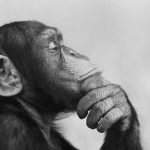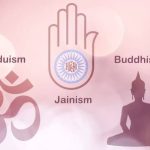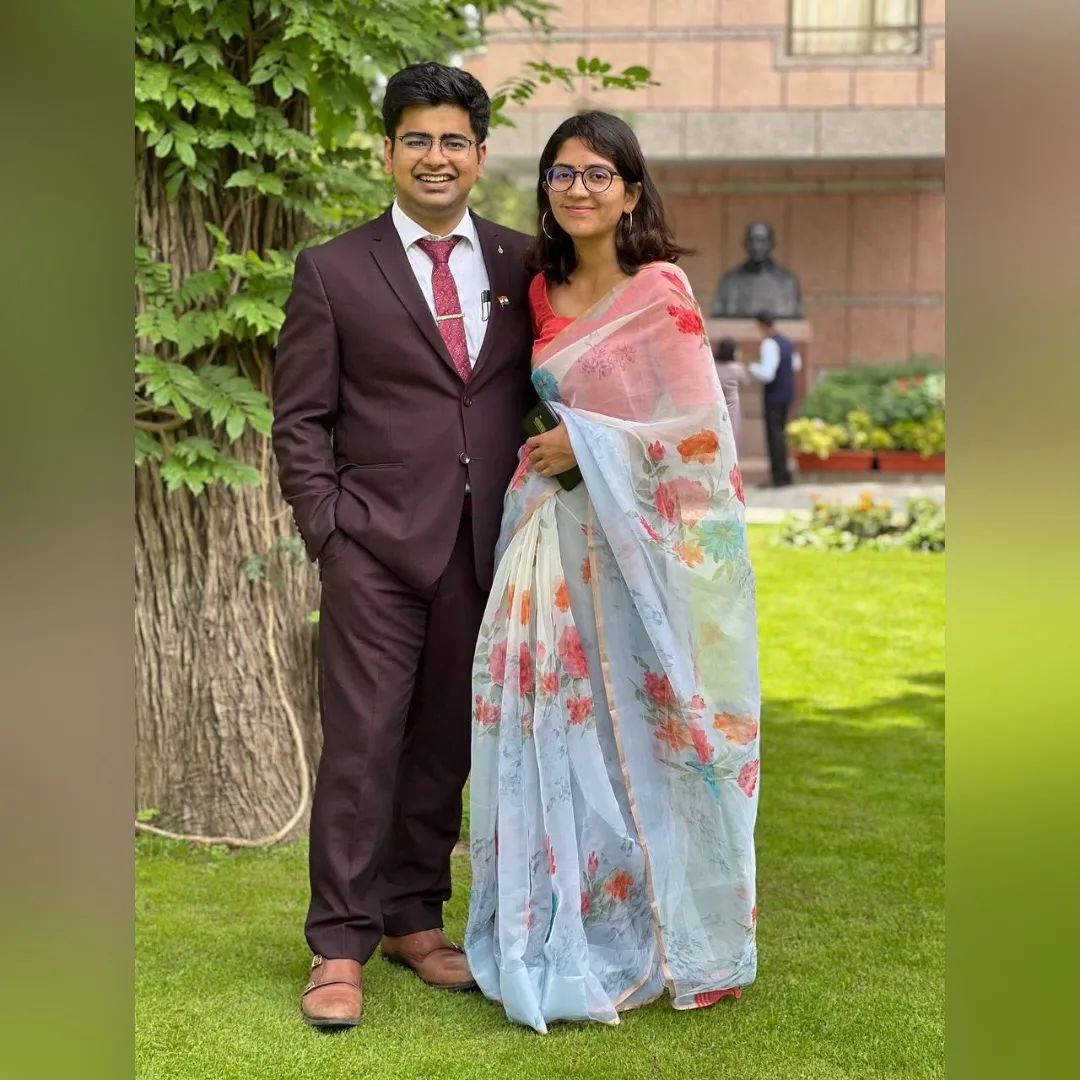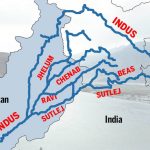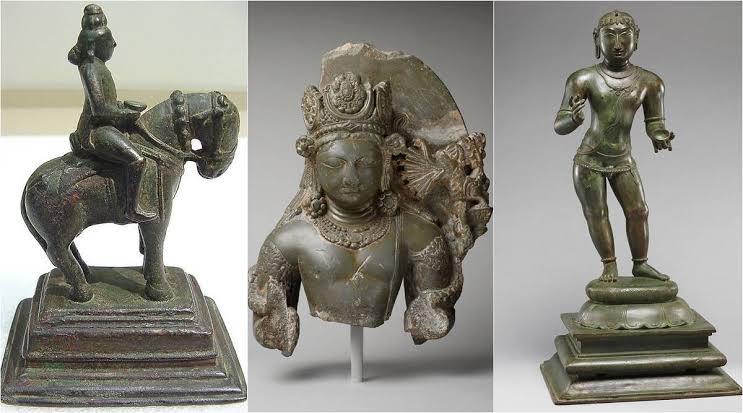
• Indian sculptors were just as good at making sculptures out of bronze (copper and tin) as they were out of clay.
• The Indus Valley Civilization used a method called “Cire-Perdu” or “Lost Wax” to make things.
• The “Dancing Girl” in tribhanga pose from Mohenjo-Daro is the oldest bronze sculpture that can be dated to 2500 BCE.
• The process of casting metal was also used to make things for everyday use, like tools for cooking, eating, drinking, etc.
• Tribal communities still use the “lost wax” process as a way to share their art today.
Table of Contents
India’s north
• Dancing girl – Mohanjadaro: The Dancing Girl figure found at Mohenjo Daro is one of the best examples of art from the Indus Valley. It is a bronze figure that shows how talented the people of the Indus Valley were. About 4 inches is how tall the figure is. The date is 2500 BC. People say it’s in the tribhanga. It is one of the oldest pieces of metal art.
• Chariot – Daimabad (Maharashtra)
• Images of Jain Thirthankaras from the Kushana period (2nd century CE) have been found in Chausa, Bihar. They are interesting.
• During the Gupta and Post-Gupta times, many standing Buddha statues with the right hand in the Abhaya Mudra were made in North India, especially in UP and Bihar.
• The Sanghati, also known as the Monk’s Robe, is put around the shoulders and left arm. The other end of the cloth is wrapped around the right arm.
The clothes on Buddha statues were thin. Compared to the Kushana style, the figure looks young and well-balanced. In the standard bronze from Dhanesar Khera, UP, the folds of the drapery are done in the Mathura style, which is a series of curves that drop down.
The Buddha image at Sultanganj, Bihar, which is a large metal statue, is a great example of the Sarnath style. It has no folds in its clothing.
Bronze statues of Buddha from Phophnar, Maharashtra, made by the Vakataka people are the same age as bronzes from the Gupta period. They show how the Amaravati style of Andhra Pradesh was important in the 3rd century. At the same time, the way a monk’s robe was draped changed in a big way.
Both Buddhist gods and goddesses and Hindu gods and goddesses were cast in bronze in the areas of Himachal Pradesh and Kashmir.
• Most of these were made in the 8th, 9th, and 10th centuries. They are very different from bronze from other parts of India in terms of style.
• The fact that there are now more kinds of pictures of Vishnu is an interesting change.
• People in these areas honoured Vishnu with four heads, who was also known as Chaturanana or Vaikuntha Vishnu.
• Around the year 900, when the Pala dynasty ruled Bihar and Bengal, a school of copper casting grew up in Buddhist cities like Nalanda.
Sculptors at Kurkihar near Nalanda were able to bring back the classical style of the Gupta period after a few hundred years. A four-armed Avalokiteswara made of bronze is a good example of a male figure in a graceful tribhanga pose. Worship of female goddesses became popular, which contributed to the growth of Buddhism’s Vajrayana phase. People liked seeing pictures of Tara. She is sitting on a chair with a growing, curved lotus stalk at her side. Her right hand is in the Abhaya Mudra sign.
India’s South
• During the Middle Ages, bronze casting and making bronze copies of traditional icons reached a high level of growth in south India.
• The best 8th-century Pallava bronze is the statue of Shiva sitting in Ardhaparyanka asana (with one leg hanging down). The Achamana Mudra sign on his right hand makes it look like he is about to drink poison.
• Even though copper statues were made during the Pallava period in the 8th and 9th centuries, some of the most beautiful and intricate statues were made during the Chola period in Tamil Nadu from the 10th to 12th centuries AD.
• The art of making metal sculptures is still done with skill in South India, especially in Kumbakonam.
• In the 10th century, the Chola Queen Sembiyan Maha Devi, who had been married but was now a widow, was a very important friend.
• Art fans from all over the world want to buy Chola bronze images more than anything else.
• The famous bronze image of Shiva dancing, called Nataraja, was made during the Chola era. Since then, many different versions of this complicated bronze image have been made.
• In the Tanjore area of Tamil Nadu, many different kinds of Shiva art were made.
The panigrahana (marriage ceremony) is shown in the 9th-century Kalyanasundara Murti by two separate statuettes. Shiva accepts Parvati’s (the bride’s) right hand with his extended right hand. Parvati is shown with a shy expression and taking a step forward. The union of Shiva and Parvati is shown in the Ardhanarisvra in a very clever way in a single image. Beautiful, free-standing figures of Parvati in the graceful tribhanga pose have also been made.
Sculptors in Andhra Pradesh tried out portrait sculpture during the 16th century, which was called the Vijayanagara time. They did this to remember the royal patrons for the future. At Tirupati, a bronze statue of Krishnadevaraya standing with his two queens, Tirumalamba and Chinnadevi, was made to look like a life-size picture.The sculpture looks like the person’s face, but it also has some idealised parts.
• The idealisation is also seen in the way the bodies are made to look both powerful and beautiful. The standing King and Queen are shown with their hands in the Namaskara mudra, which means they are praying.
Nataraja
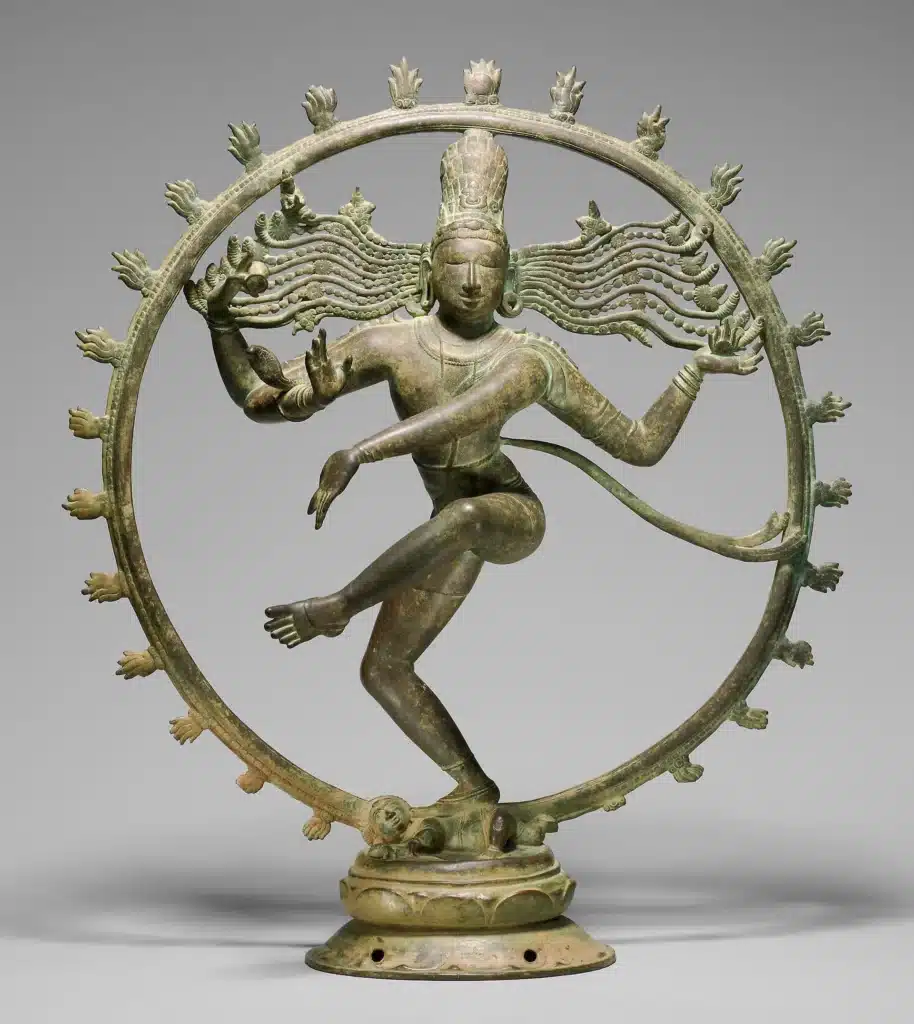
• Shiva is associated with the end of the cosmic world with which his dancing position is associated. • In this Chola period bronze sculpture, he has been shown balancing himself on his right leg and suppressing the apasmara, the demon of ignorance or forgetfulness, with the foot of the same leg .
• At the same time, he raises his left hand in Bhujangatrasita stance, which represents tirobhava that is kicking away the veil of maya or illusion from the devotee’s mind.
The upper left hand holds a flame, and the main left hand is in the Dolahasta position and linked to the right hand’s Abhayahasta position. His hair locks fly to both sides and touch the circle jvala mala or garland of flames that surrounds the whole dancing figure.









